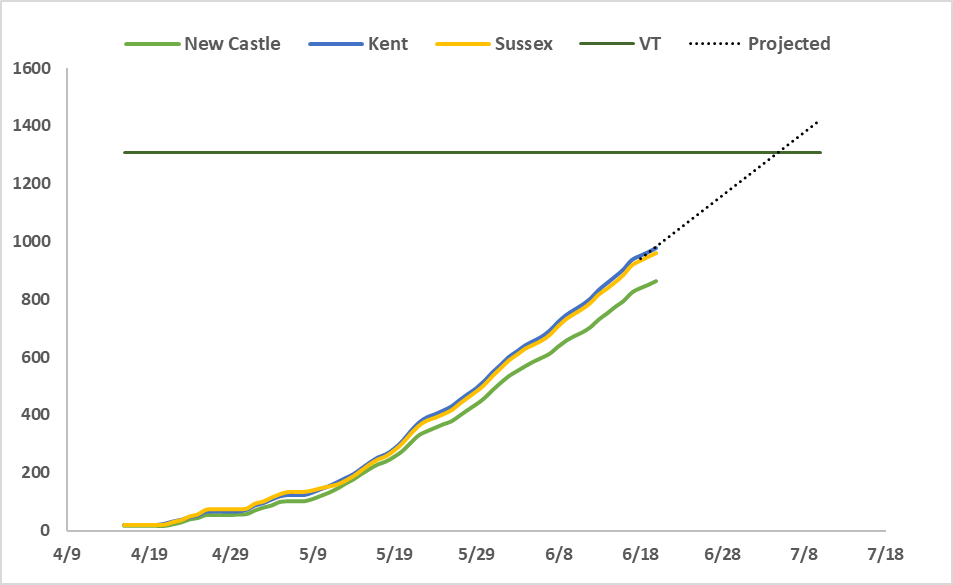Jarrod O. Miller, Extension Agronomist, jarrod@udel.edu and Cory Whaley, Sussex Co. Extension Ag Agent; whaley@udel.edu
The standard method used to follow and predict corn growth stages is using growing degree days (GDD). This is a calculation that uses average daily temperatures to measure accumulated heat over the growing season. Using GDD works better than days from planting because cool spring temperatures slow early planted corn, while corn planted later in May can have a more linear growth pattern. This can be seen in Figure 1, where corn planted in April has fluctuating daily GDD, but starts to have a steady increase around mid-May.
For the past three seasons in Georgetown we have followed our research plots and have these values as the average GDD for our area (Table 1). Based on these values we can project that early planted corn (mid-April) should start to tassel (VT stage) around the July 4th weekend (Figure 1), at least in Sussex and Kent counties. In northern DE, cooler temperatures may push that back by about a week, but only if you could plant in mid-April.
Table 1. Delaware Corn Growth Stages (2019-2021)
| Emerge | V3 | V6 | |
| Average | 109 | 262 | 556 |
| Range | 84-150 | 220-310 | 448–603 |
| V9 | V12 | VT | |
| Average | 871 | 1067 | 1308 |
| Range | 787-950 | 943-1272 | 1232-1363 |
| R1 | R2 | R3 | |
| Average | 1486 | 1645 | 1891 |
| Range | 1321-1594 | 1560-1743 | 1734-2067 |
| R4 | R5 | R6 | |
| Average | 2044 | 2287 | 2824 |
| Range | 1957-2187 | 2029-2509 | 2686-2926 |
Many fields have been planted in late May and early June as well, where New Castle count still remains behind in GDD accumulation (Figure 2). We can project that the VT will occur sometime at the end of July. If you have fields planted across a range of these dates, this will be a good year to watch how planting date and temperature may affect pollination rates. Weather stays fairly random, but we do often see droughts and high temperatures around the beginning of July, which will reduce yield potential if pollination is occurring.

Figure 1. Growing degree accumulation from a mid-April planting date in Sussex, Kent, and New Castle counties.

Figure 2. Growing degree accumulation from a late May planting date in Sussex, Kent, and New Castle counties.
